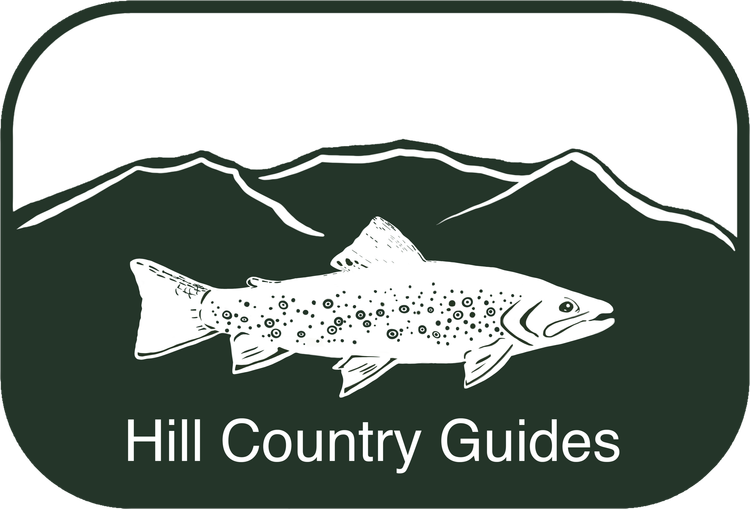Well October is now over. The fishing was productive till the very end with fish eating black and orange midges on Halloween.
Wild rainbow taken on a black and orange midge 10/31/2014
Over the past few weeks I've had some time to get out in the boat and do some exploring. I've been finding productive water with large trout caught on streamers, nymphs and even dries. It has been fun searching for browns which are aggressively chasing large streamers this time of the year. The key to finding these fish is locating the water types where they prefer to spawn. We've found fish laid up in riffled water close to banks, as well as in mid river riffles, flats and side channels, where there is appropriate spawning gravel. Rainbow trout can also be found in these water types and will chase streamers this time of the year. Rainbows will also strike egg patterns and a variety of nymphs as they focus on feeding behind spawning browns.
Brown trout caught nymphing from the inside corner of a riffle.
This 17" brown chased this large articulated streamer on two consecutive casts before engulfing it. Was laid up on a piece of slightly riffled water in an otherwise slow moving section.
Slow moving eddies are another water type worth exploring this time of the year. Here fish will hold to feed on bugs trapped in the back flow and seams. A nine foot four weight with a soft tip is your ideal weapon for this water type. Large fish will come up slowly to suck down small BWO's and midges. A softer rod ensures good tippet protection when fishing these smaller flies.
This brown measured 21" and was found in the seam of a deep fast moving riffle.
Areas below dams are also a good bet as fish will move to this area of deep aerated water to hold through the winter months. I prefer using large weighted streamers on a sinking or sink tip line to effectively fish this water. If you are not having success be sure to vary your retrieve. Sometimes slowing things down can result in increased takes this time of the year.
So what will November bring? Fishing will continue to be productive in the areas mentioned above. Dry fly fishing will be most productive on warmer, calmer days with streamers being your best bet when temps drop. Egg patterns and larger nymphs will become even more important as fish continue spawning and try to pack on weight for winter. While it gets a bit colder this time of the year there is no reason to stop fishing. Being prepared for the weather with extra warm layers, hats and fingerless gloves, as well as a thermos of hot coffee, or soup, will ensure that you stay comfortable enough to hook and land fish. I prefer fishing with ski pants under my waders this time of the year. I find them less restricting than long underwear and even warmer. It is also a good idea to wear some blaze orange, as the hunting season is underway.
If you are interested in learning more about late season angling, it is not too late to book a trip for 2014.
Tight Lines,
Nate
17" wild rainbow tout caught nymphing a riffle.
































